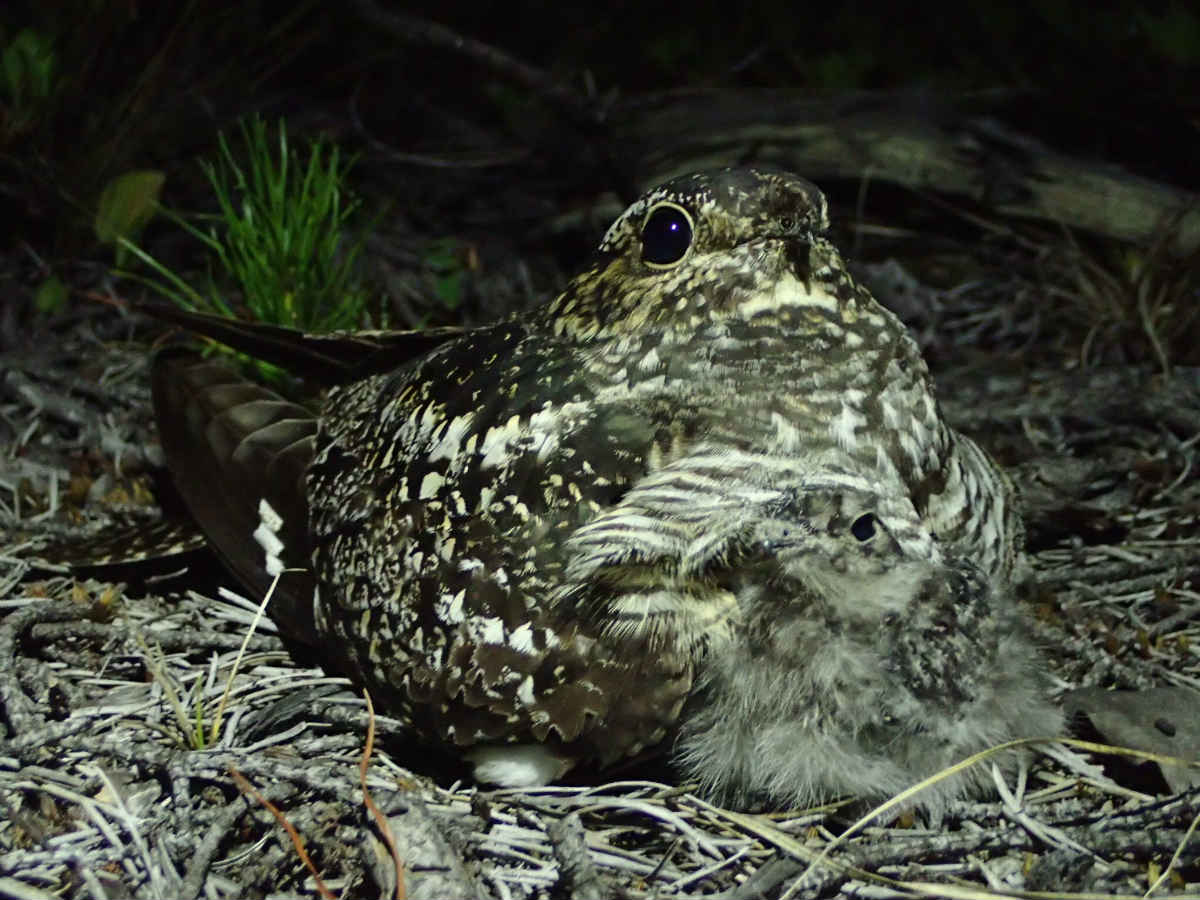
A nighthawk mother and chick. Scientists have revealed the migratory route of this threatened species by fitting birds with satellite transmitters. Photo credit: Elly Knight
The enigmatic nighthawk travels 20,000 km each year in its annual migration from north of Fort McMurray to the Amazon rainforest in Brazil, according to new research by University of Alberta biologists. This insight is the first step in developing conservation strategies to protect the threatened species.
In the last 50 years, nighthawk populations have declined by 80 per cent for reasons still unknown. In order to begin solving this puzzle, UAlberta biologists partnered with the Smithsonian Migratory Bird Center in Washington, DC to track the migrating bird across two hemispheres, from the nighthawk's nesting grounds in Canada to its winter home in Brazil. The research team needed to track the nighthawk to understand what risks it might encounter during the eight months it spends outside of Canada each year.
"Until now, we've understood very little about migration routes and wintering grounds of the nighthawk," explained Elly Knight, co-author on the study and PhD candidate studying with Erin Bayne, professor in the Department of Biological Sciences.
"We were surprised to find that they spent their winter in Brazil because most observations of them are from further south in Argentina. We also learned that nighthawks return to almost exactly where they summered in the past year."
Knight and her colleagues fit 10 male nighthawks with small satellite transmitters that fit like small backpacks, which record and transmit data about the bird's location for a 12-month period.
"Because we can track exactly where they spent their day, we can see they came back to almost exactly where we caught them one year prior," said Janet Ng, PhD candidate with Bayne and the lead author of the paper.
Once the birds reached South America, they spent most of the winter in the Amazon rainforest and tropical savannas of Brazil. Come spring, they migrated back to their nesting grounds in Northern Alberta.
"Knowing where and when Common Nighthawks spend their year is the first step towards understanding why their populations are declining," explained Knight.
Next, the research team is expanding their migration project across North America to compare the risks that different threatened bird populations face, a critical first step for developing effective conservation strategies.
The paper, "First full annual cycle tracking of a declining aerial insectivorous bird, the Common Nighthawk (Chordeiles minor), identifies migration routes, non breeding habitat, and breeding site fidelity," is published in Canadian Journal of Zoology (doi: 10.1139/cjz-2017-0098).
